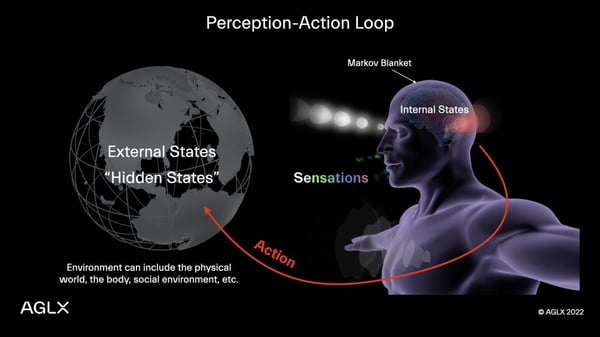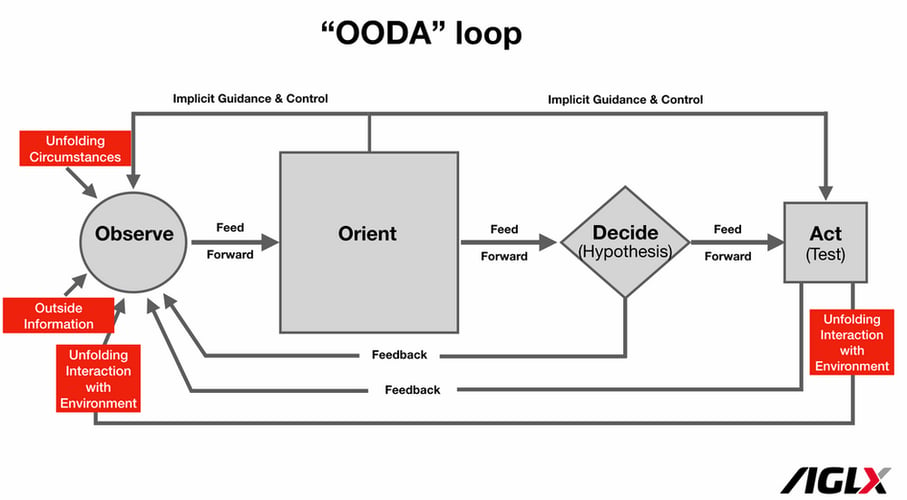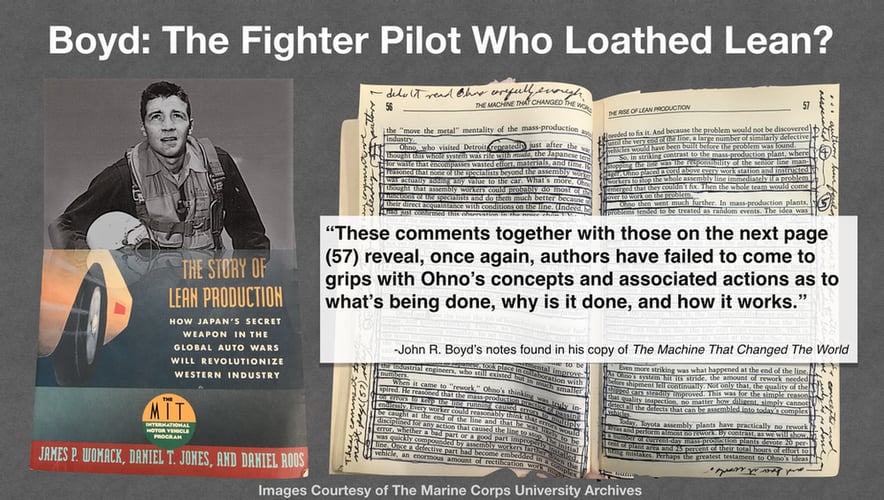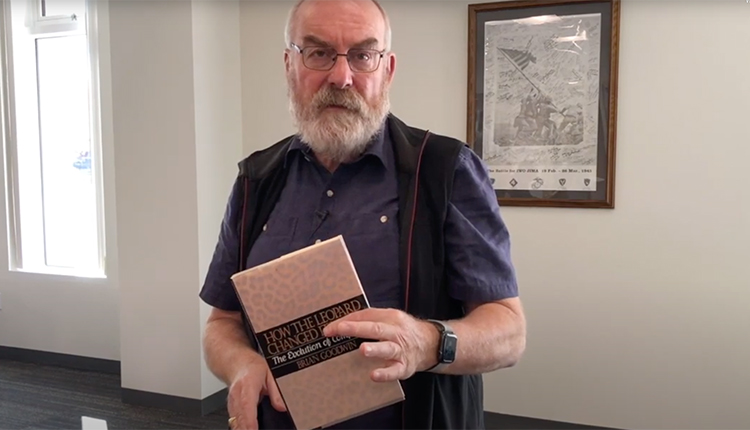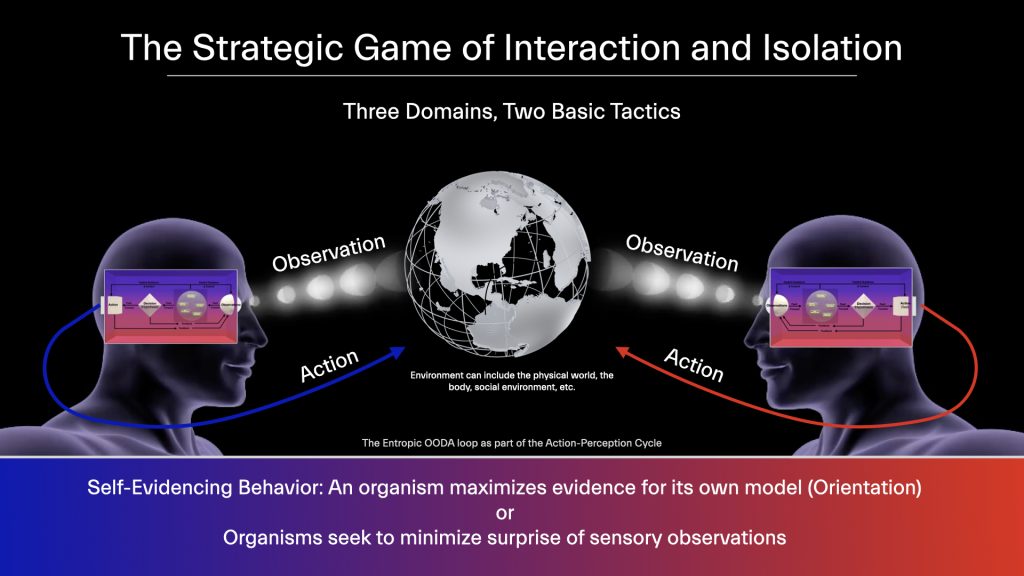
Within the OODA loop, Orientation is what makes You You.
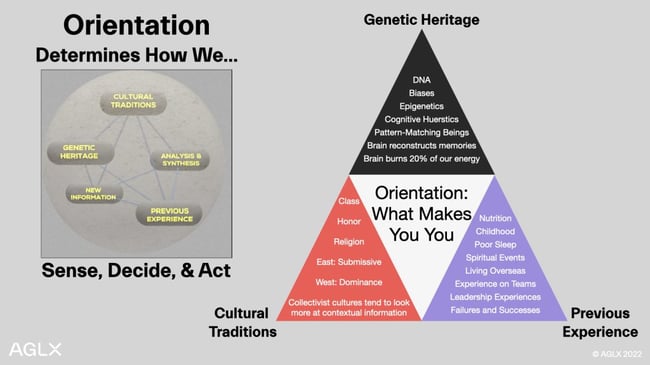
What Makes You You.
Cognition, consciousness, and perception of reality are emergent properties of Cultural Traditions, Genetic Heritage, and Previous Experiences “mixed’ with New Information received from sensory organs (sensations) that directly interact (Observe) with the outside environment. In short, we all perceive the outside environment (world) a little differently.
The OODA loop and the Free Energy Principle (FEP) provide insights on how organisms comprehended, shape, and adapt to an evolving reality that is uncertain, everchanging, and unpredictable. Both OODA and FEP suggest that our individual realities are constructed from the top-down inside-out; we do not experience reality directly from the outside-in. In fact, our mind-body does not perceive the world for what it is; the mind-body perceives the world in a way that is advantageous to us, from our advantage point.
“Our experience of reality is the brain’s ultimate construction.”
-David Eagleman, -The Brain
The OODA Loop Needs a Blanket
There are two basic rules to drawing the OODA loop: (1) do not draw it as a simple, sequential process (it is not a circle) and (2) do not make it any more complicated than it already is. With these rules in mind, I prefer to draw the OODA loop with an explicit boundary that separates the OODA loop’s internal states from the external states of the environment. Within this boundary, entropy—uncertainty, ignorance, diversity, and the degree of randomness or disorder in a system—increases towards the bottom and decreases towards the top. This depiction of the OODA loop within an entropic boundary (The Entropic OODA loop), I believe, amplifies the phenomenological explanatory power of Boyd’s OODA loop.
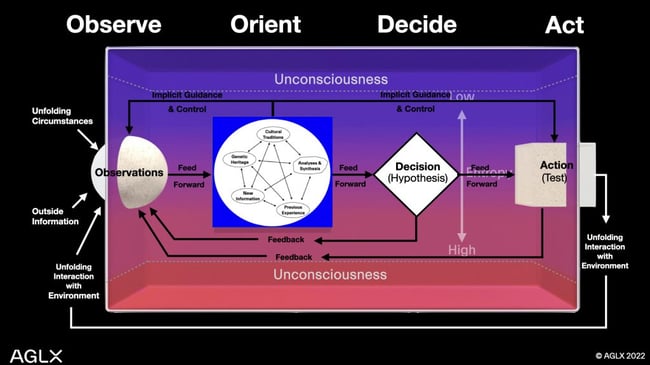
The OODA loop with a entropic boundary or Markov Blanket.
Within the Free Energy Principle, this boundary is known as a Markov Blanket—a statistical formalization of the partitioning of the system into internal states and external states. What is unique about a Markov Blanket or boundary is that it consists of states that separate the internal and external environment. Notice how the boundary around the Entropic OODA loop contains or bisects the states of Observation (Sensation) and Action.
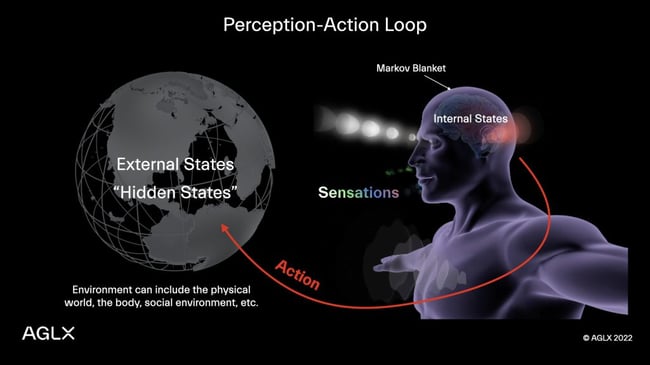
Perception-Action Loop: The skin acts as a Markov Blanket separating internal states from external states
Let’s Reorient Back to Orientation
Our sensory organs “observe” or interact with the outside world and send sensory signals to a generative model known in the OODA loop as “Orientation.”
In the OODA loop, sensory organs or sensations are represented by the first “O:” Observe/Observation. Orientation, the second “O” in the OODA loop, can be thought of as a probabilistic generative model that constructs predictions about incoming observations. That is, Orientation generates predictions (Decisions / Hypothesis / “What We Expect”) of the causes behind the sensory signals coming from sensory organs to include the eyes, ears, and skin.
From FEP, the difference between these sensory signals and predictions generated from our generative model (Orientation) is known as “surprise.” In his 1976 Destruction and Creation paper, John Boyd called these surprises “Mismatches.”
Mismatches = Orientation – Observation
Surprise = preferred sensory observations (Orientation) – current sensory observations (Observation)
Mismatches = Surprise
Within FEP there is a formal process known as prediction error minimization or surprise minimization (informally, this process is known by other names including entropy minimization, uncertainty minimization, and mismatch minimization). This surprise minimization process within the OODA loop is partially depicted by the Observation-Orientation-Decision-Observation loop (below).

O-O-D-O loop within the OODA loop represents an active process known as perceptual inference.
This O-O-D-O loop within the OODA loop represents an active process known as perceptual inference. This is considered an active process because Orientation is a predictive machine—it is constantly predicting the causes behind incoming stimuli (Sensory Signals), it doesn’t passively wait for them.
This perception loop (O-O-D-O loop) is complemented by (1) an external action loop moving from Action to the environment and back to Observation and (2) an internal policy loop moving from Action internally back to Observation. The external action loop directly influence the outside world or environment. The internal policy loop runs “what if” or counterfactual simulations of past, ongoing, and future actions.
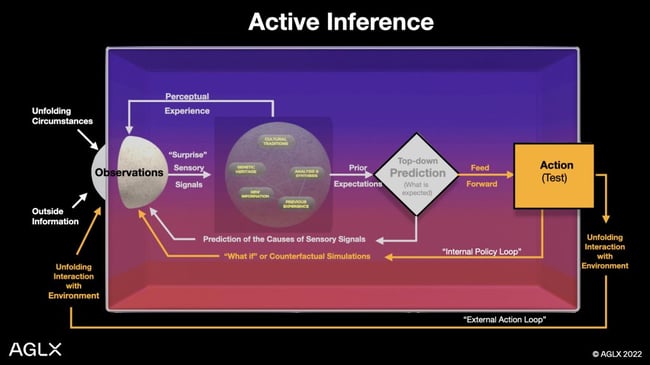
The External Action and Internal Policy Loops compliment Perceptual Inference. This is what Active Inference looks like in the Entropic OODA loop.
Key Point: Sensory signals can only be changed through action—external action and internal action loops. This adaptive control from the two Action loops combined with the perception loop are known as Active Inference.
There is another OODA loop pathway that I have not covered and that is the pathway or loop that moves internally from Orient to Action. It represents autonomic responses, habits, and proprioception. Boyd labeled this pathway Implicit Guidance and Control and used the German term Fingerspitzengefühl (fingertip feel or instinct) to describe it.
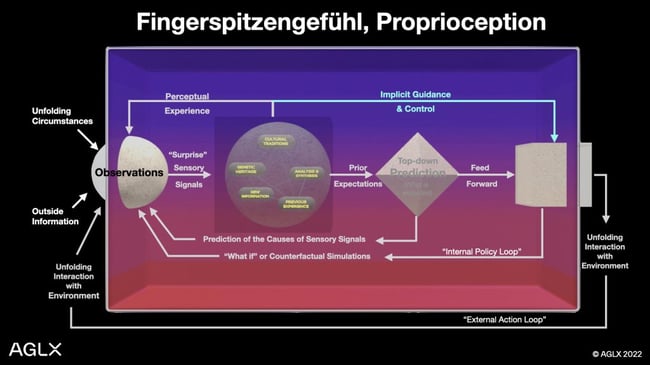
Light Blue Pathway: Fingerspitzengefühl or instinct, habits, muscle memory, autonomic responses, proprioception.
That’s enough sausage making for now. Let’s apply what we’ve learned to the current political environment.
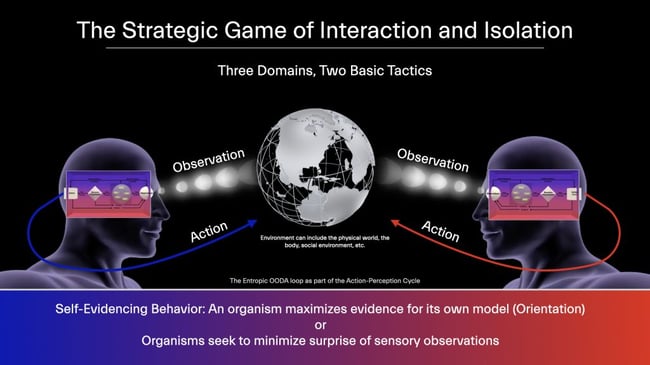
Three Domains of the Strategic Game
Make no mistake, the current political environment is a game of interaction and isolation. In “The Strategic Game of ? and ?” where the first question mark represents “Interaction” and the second “Isolation,” Boyd points out that this Strategic Game is played in three domains: Physical, Mental, and Moral.
- The matter-energy-information domain, what Boyd calls the Physical domain, is the External State or environment.
- The Mental domain is the Internal State in which Boyd describes as containing emotional/intellectual activity.
- The third domain, one that can be considered as the ”rules of the game” and embedded within the Internal States is known as the Moral domain. According to Boyd, the Moral domain contains the “shared” cultural codes of conduct or standard of behaviors that potentially constrain actions and shape perceptions.
The Tactics of the Game
- Perception is about changing your mind, updating beliefs, or changing your Orientation.
- Action is about changing the environment or outside world to make it more compatible with your beliefs or Orientation.
I will try to be apolitical as much as I can but to be honest, I find it incredibly difficult given the amount hypocrisy I’ve observed from the actions taken by others that forced people like me who once shared ideas on social media for the purpose of learning to isolate over the past few years.
The object in the Strategic Game is to minimize your own surprise while creating mismatches in the environment that generate surprise—”uncertainty, confusion, disorder, panic, chaos” in your adversaries’ OODA loops (Internal States) “to shatter cohesion, produce paralysis and bring about collapse.” Yes, this is a very dangerous game that does not end well—it ends in entropic erosion (death)—unless we all recognize it is being played and that the majority of us are only pawns. This is why having a basic understanding of the OODA loop and FEP is an imperative.
If You Cannot Hit it Over the Net, Lower the Net? No!
In this Strategic Game, adapting your Orientation to the outside environment should be favored over changing the environment to match your Orientation. Over the past few years we’ve seen the opposite. To minimize surprise or maximize the evidence for their own models (Orientation), members from both political parties engaged in redefining shared constraints such as the definition of recession, insurrection, and vaccine. This self-evidencing behavior and attack in the Moral domain protects those who cannot accept surprising information from the outside world—they prefer remaining in a stuck state—while this action is viewed by those on the other side of the political spectrum as a Gaslighting.
Another tactic in this Strategic Game of Interaction and Isolation is to cut off or reduce the flow of information within the environment that does not fit your current model or Orientation. This is accomplished through assigning “fact checkers” on social media platforms and blocking accounts belonging to people who share “surprising” information. Another tactic is to label surprising information as misinformation or disinformation and call those who share such surprising information “extremists,” “racists,” or “Trumpsters.”
I don’t want to risk being labeled an extremist here so I will knock it off with this. To avoid entropic erosion (death) as a country, the Strategic Game is best played by favoring interaction over isolation. After all, we are all on the same team. We need to save this type of 5th Generation Warfare for our external enemies, not employ it against each other.
The preferred method to reducing surprise is to keep the flow of information open and adapt to the environment, change your perception or Orientation.
Realize that we all view the world differently based off of the interplay of our Cultural Traditions, Genetic Heritage, and Previous Experiences.
Bibliography
Boyd, John R (199?). The Conceptual Spiral. Lecture given to Air Command and Staff College
Boyd, John R. (1987). Destruction and Creation In a Discourse on Winning and Losing
Boyd, John R. (1987). The Strategic Game of ? and ?
Carhart-Harris, R.L., Friston, K.J. (2019). REBUS and the Anarchic Brain: Toward a Unified Model of the Brain Action of Psychedelics
Carhart-Harris, R.L., (2014). The entropic brain: a theory of conscious states informed by neuroimaging research with psychedelic drugs
Eagleman, David. 2016. The Brain. Prestonpans, Scotland
Hipolito, I. (2022). Free Energy on the Edge of Chaos. CCNB Seminar Series is hosted by Center for Cognitive Neuroscience Berlin.


